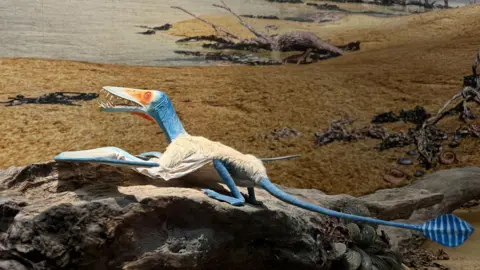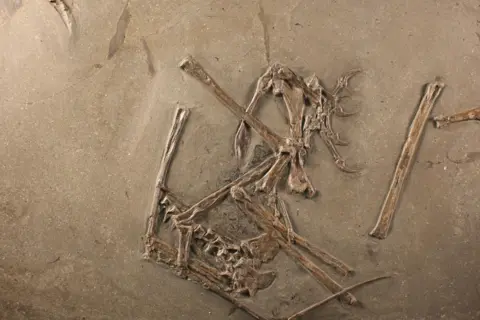Fossils show flying reptiles ate squid and fish
 PA
PAPrehistoric flying reptiles lived on a diet of small fish and squid, the latest scientific research has shown.
Researcher Dr Roy Smith said stomach contents discovered in fossils were the "smoking gun" evidence for the diets.
The findings were made by scientists from the University of Portsmouth and the Staatliches Museum fur Naturkunde Stuttgart in Germany and published in the Journal of Vertebrate Paleontology.
Pterosaurs lived 182 million years ago and had wingspans of up to 12m (39ft).
The team analysed the fossilised stomach contents of two pterosaur species, dorygnathus and campylognathoides.
They lived during the early Jurassic period, and were found in modern-day south-west Germany.
They found that dorygnathus ate small fish for its last meal while campylognathoides ate prehistoric squid.
 PA
PADr Smith, from Portsmouth University's School of Environment and Life Sciences, said: "It is incredibly rare to find 180 million-year-old pterosaurs preserved with their stomach contents, and provides 'smoking gun' evidence for pterosaur diets.
"The discovery offers a unique and fascinating glimpse into how these ancient creatures lived, what they ate, and the ecosystems they thrived in millions of years ago."
 PA
PADr Samuel Cooper, also from the University of Portsmouth, said the stomach contents told scientists "how the animals interacted with each other".
He added: "For me, this evidence of squid remains in the stomach of campylognathoides is therefore particularly exciting.
"Until now, we tended to assume that it fed on fish, similar to dorygnathus, in which we found small fish bones as stomach contents.
"The fact that these two pterosaur species ate different prey shows that they were likely specialised for different diets.
"This allowed dorygnathus and campylognathoides to coexist in the same habitat without much competition for food between the two species."
You can follow BBC Hampshire & Isle of Wight on Facebook, X (Twitter), or Instagram.
